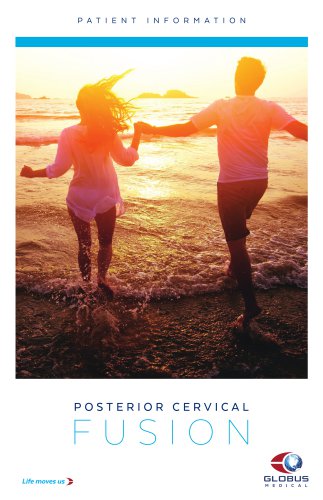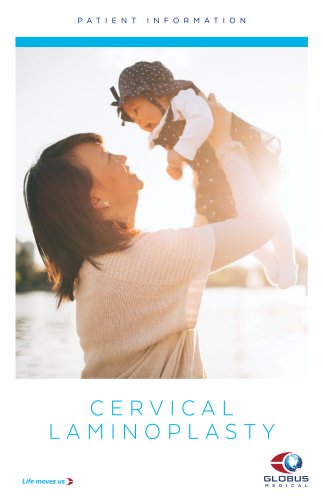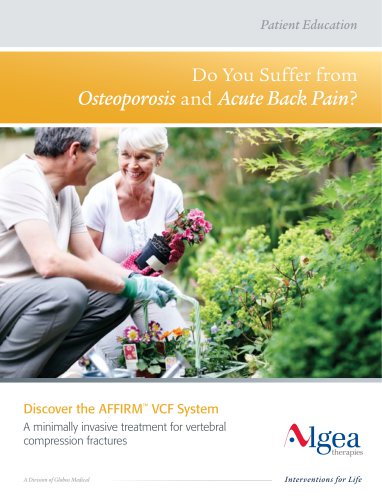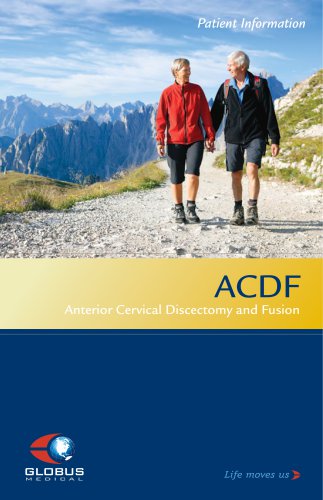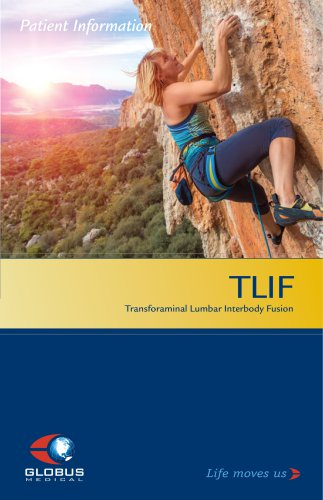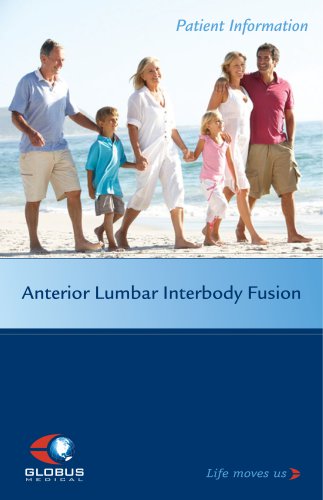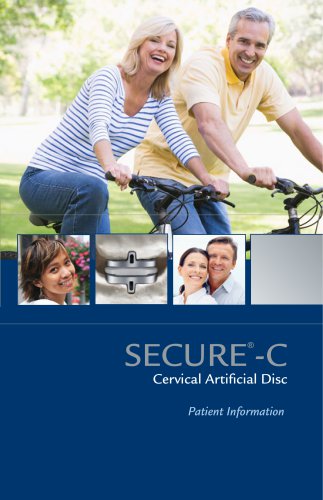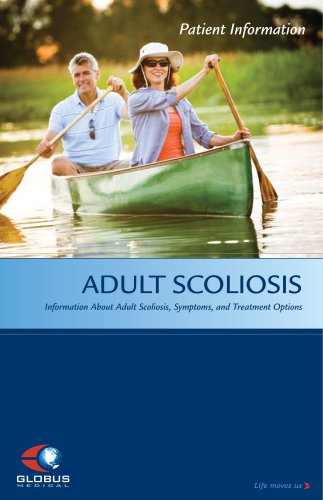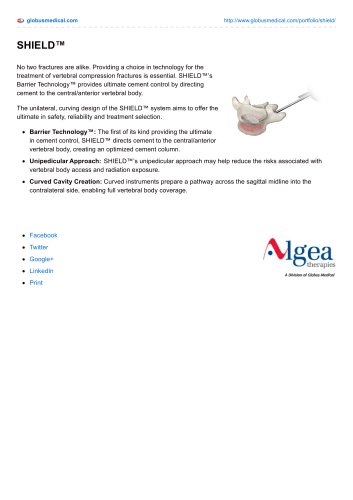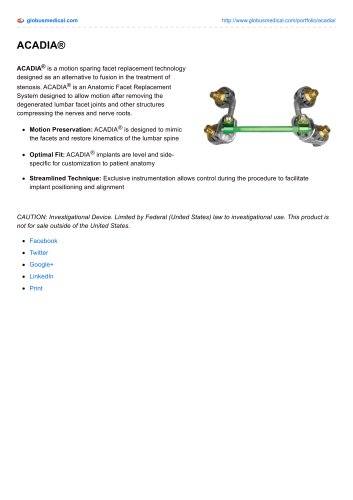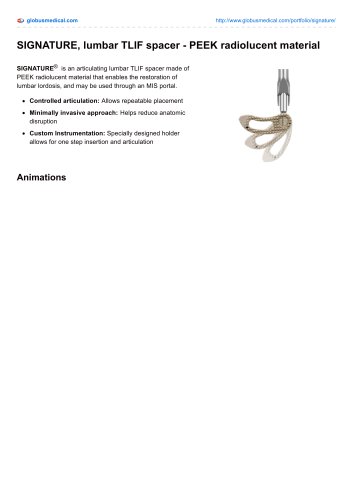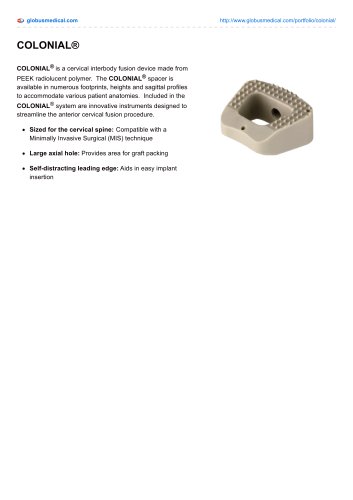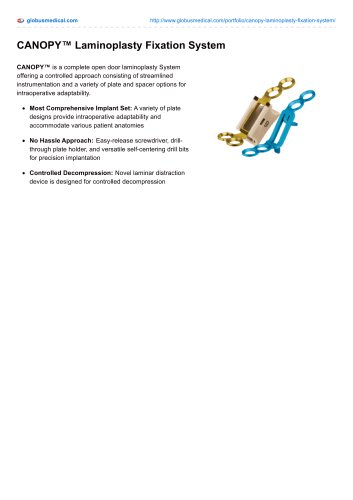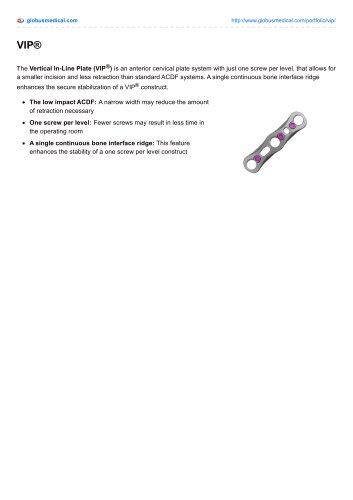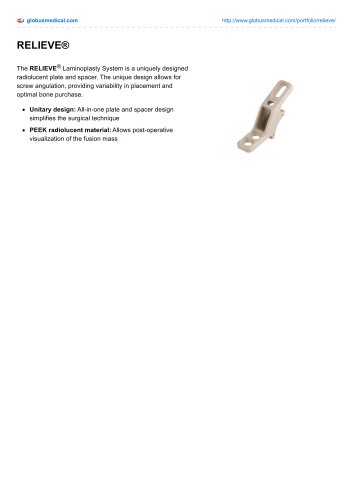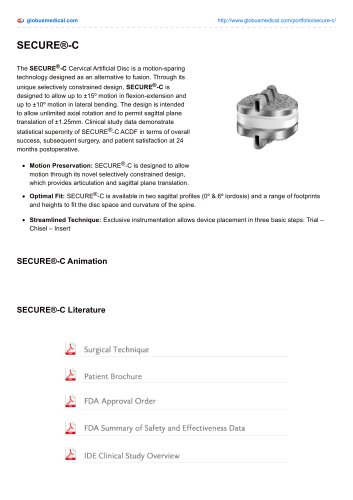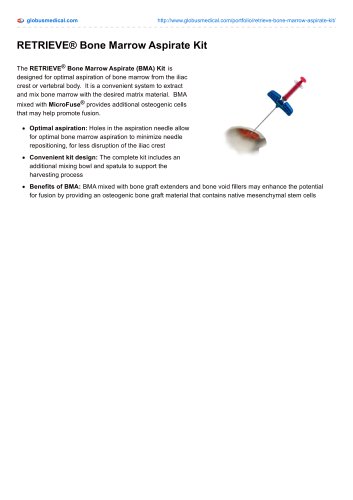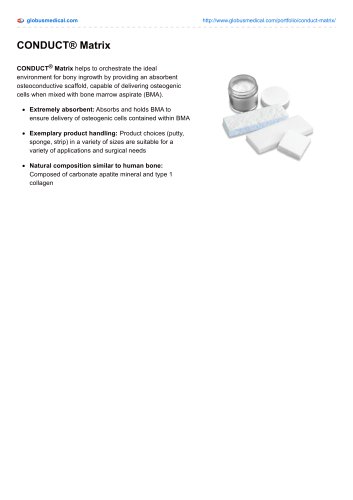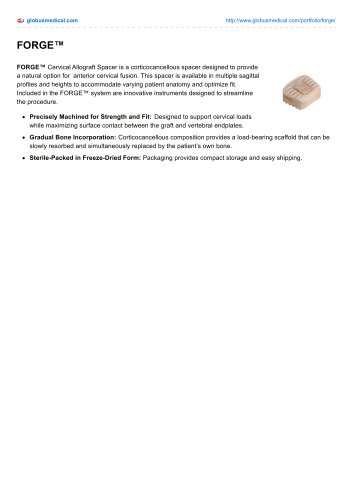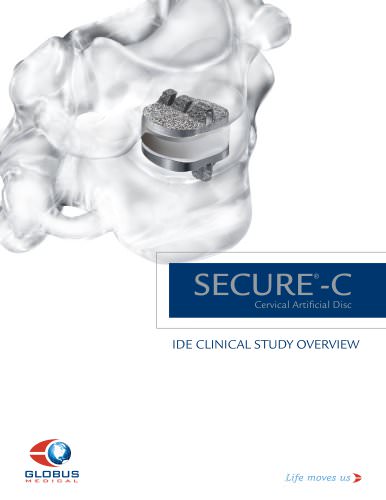 Website:
Globus Medical
Website:
Globus Medical
Catalog excerpts

POSTERIOR CERVICAL
Open the catalog to page 1
Patient Information This brochure will help you understand more about: ► Anatomy of the spine ► Common conditions of the cervical spine ► Posterior cervical fusion surgery The decision to receive medical treatment is individualized to the patient and the patient’s symptoms. The information presented within this brochure may not apply to your condition, treatment, or its outcome, as surgical techniques vary and complications can occur. It is important to discuss the viability of posterior cervical fusion with your physician to decide whether this treatment option is right for you. This...
Open the catalog to page 2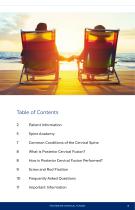
Table of Contents 2 Patient Information 7 Common Conditions of the Cervical Spine 8 What is Posterior Cervical Fusion? 8 How is Posterior Cervical Fusion Performed? 10 Frequently Asked Questions POSTERIOR CERVICAL FUSION 3
Open the catalog to page 3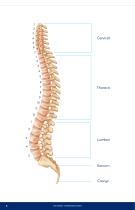
PATIENT INFORMATION
Open the catalog to page 4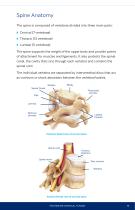
Spine Anatomy The spine is composed of vertebrae divided into three main parts: } Cervical (7 vertebrae) } Thoracic (12 vertebrae) } Lumbar (5 vertebrae) The spine supports the weight of the upper body and provide points of attachment for muscles and ligaments. It also protects the spinal canal, the cavity that runs through each vertebra and contains the spinal cord. The individual vertebra are separated by intervertebral discs that act as cushions or shock absorbers between the vertebral bodies. Pedicle Spinal Canal Transverse process Disc Lamina Spinous process Lateral masses Posterior...
Open the catalog to page 5
Spinal stenosis Normal disc Bulging disc Degenerative disc Herniated disc Narrowing of cervical spine canal due to disc herniation (spinal stenosis) Bone spurs compressing nerves Nerve roots Narrowing of cervical spine canal due to osteophyte (bone spur) PATIENT INFORMATION
Open the catalog to page 6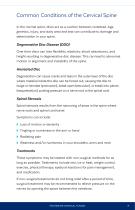
Common Conditions of the Cervical Spine In the normal spine, discs act as a cushion between vertebrae. Age, genetics, injury, and daily wear and tear can contribute to damage and deterioration in your spine. Degenerative Disc Disease (DDD) Over time discs can lose flexibility, elasticity, shock absorbancy, and height resulting in degenerative disc disease. This can lead to abnormal motion or alignment and instability of the spine. Herniated Disc Degeneration can cause cracks and tears in the outer layer of the disc where material inside the disc can be forced out, causing the disc to bulge...
Open the catalog to page 7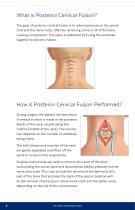
What is Posterior Cervical Fusion? The goal of posterior cervical fusion is to relieve pressure on the spinal cord and the nerve roots, often by removing some or all of the bone causing compression. The spine is stabilized by fusing the vertebrae together to prevent motion. How is Posterior Cervical Fusion Performed? During surgery, the patient lies face down. A vertical incision is made in the posterior (back) of the neck, usually along the midline (middle of the neck). The incision size depends on the number of vertebrae being fused. The soft tissues and muscles of the neck are gently...
Open the catalog to page 8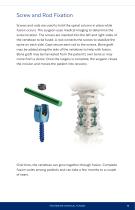
Screw and Rod Fixation Screws and rods are used to hold the spinal column in place while fusion occurs. The surgeon uses medical imaging to determine the screw location. The screws are inserted into the left and right sides of the vertebrae to be fused. A rod connects the screws to stabilize the spine on each side. Caps secure each rod to the screws. Bone graft may be added along the side of the vertebrae to help with fusion. Bone graft may be harvested from the patient’s own bone or may come from a donor. Once the surgery is complete, the surgeon closes the incision and moves the patient...
Open the catalog to page 9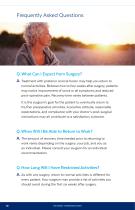
Frequently Asked Questions Q. What Can I Expect from Surgery? A. reatment with posterior cervical fusion may help you return to T normal activities. Between two to four weeks after surgery, patients may notice improvement of some or all symptoms and reduced post-operative pain. Recovery time varies between patients. is the surgeon’s goal for the patient to eventually return to It his/her preoperative activities. A positive attitude, reasonable expectations, and compliance with your doctor’s post-surgical instructions may all contribute to a satisfactory outcome. Q. When Will I Be Able to...
Open the catalog to page 10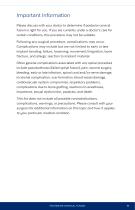
Important Information Please discuss with your doctor to determine if posterior cervical fusion is right for you. If you are currently under a doctor’s care for certain conditions, this procedure may not be suitable. Following any surgical procedure, complications may occur. Complications may include but are not limited to early or late implant bending, failure, loosening, movement/migration, bone fracture, and allergic reaction to implant material. Other general complications associated with any spinal procedure include pseudarthrosis (failed spinal fusion), pain, second surgery, bleeding,...
Open the catalog to page 11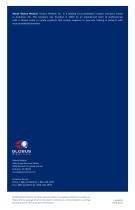
About Globus Medical: Globus Medical, Inc. is a leading musculoskeletal implant company based in Audubon, PA. The company was founded in 2003 by an experienced team of professionals with a shared vision to create products that enable surgeons to promote healing in patients with musculoskeletal disorders. GLOBUS MEDICAL Globus Medical Valley Forge Business Center 2560 General Armistead Avenue Audubon, PA 19403 www.globusmedical.com Customer Service: Phone: 1-866-GLOBUS1 (or 1-866-456-2871) Fax: 1-866-GLOBUS3 (or 1-866-456-2873) ©2018 Globus Medical. All rights reserved. Patent...
Open the catalog to page 12All Globus Medical catalogs and technical brochures
-
Discover the SHIELD™ VCF System
20 Pages
-
ExcelsiusGPS
12 Pages
-
CERVICAL LAMINOPLASTY
14 Pages
-
Discover the AFFIRM™ VCF System
20 Pages
-
SECURE-C®
24 Pages
-
ACDF
16 Pages
-
TLIF patient brochure
12 Pages
-
SI-LOK™
12 Pages
-
TRANSITION
12 Pages
-
complete bone graft
1 Pages
-
SP-Fix
12 Pages
-
SECURE®-C
24 Pages
-
Adolescent Idiopathic Scoliosis
16 Pages
-
ADULT SCOLIOSIS
16 Pages
-
MIS LLIF
16 Pages
-
MIS TLIF
12 Pages
-
MONUMENT
2 Pages
-
CREO AMP® Threaded
1 Pages
-
CREO MCS?
2 Pages
-
SHIELD?
1 Pages
-
ACADIA®
1 Pages
-
SIGNATURE®
1 Pages
-
SUSTAIN® & SUSTAIN®-R, Arch
1 Pages
-
TRUSS®
1 Pages
-
XPand®-R
1 Pages
-
ZYFUSE®
1 Pages
-
COLONIAL®
1 Pages
-
VIP®
1 Pages
-
PROVIDENCE?
1 Pages
-
RELIEVE®
1 Pages
-
ASSURE®
1 Pages
-
SECURE®-C
2 Pages
-
COALITION®
1 Pages
-
CAPITOL?
1 Pages
-
LATIS
3 Pages
-
CONDUCT® Matrix
1 Pages
-
FORGE?
1 Pages
-
SECURE®-C technical overview
12 Pages

